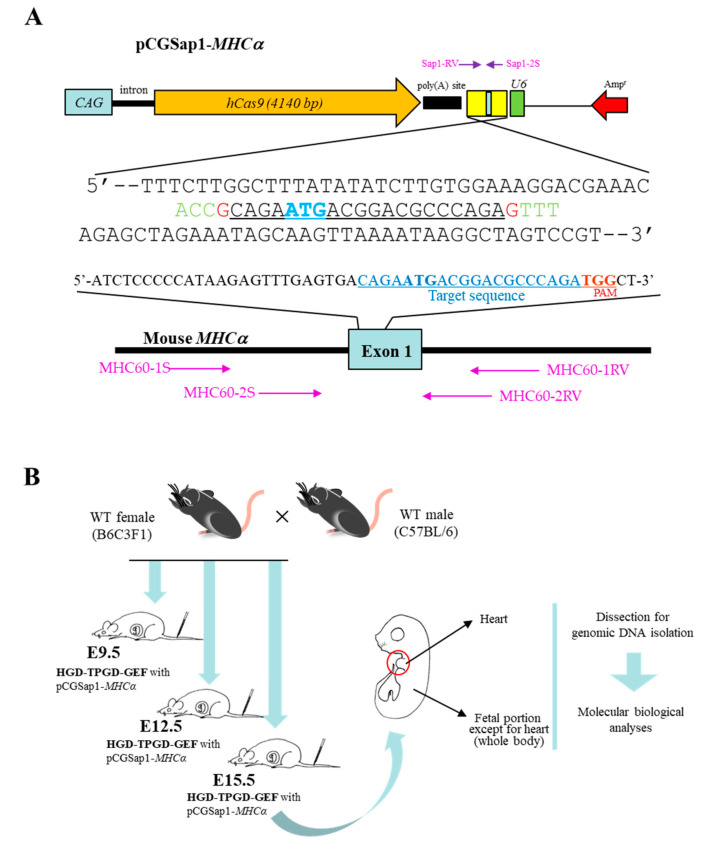Figure 1.
Plasmid used for hydrodynamics-based gene delivery (HGD)-based transplacental gene delivery for acquiring genome-edited fetuses (TPGD-GEF), and a flowchart for experiments using HGD-based TPGD-GEF. (A). Structure of pCGSap1 carrying a Cas9 expression unit (comprising CAG, the second intron of the rabbit β-globin gene, the humanized Cas9 (hCas9) gene, and the poly(A) site of the rabbit β-globin gene) and a guide RNA (gRNA) expression unit (comprising U6, multiple sites into which chemically synthesized gRNA can be inserted, and a poly(A) site). As described in the Materials and Methods section, oligos targeting MHCα exon 1 were synthesized and inserted into the Sap I site of pCGSap1 to create pCGSap1-MHCα. The fidelity of the resultant pCGSap1-MHCα was confirmed by DNA sequencing using the Sap1-2S primer. The results of sequencing are shown at the bottom of A. The underlined sequence corresponds to the sequence of the gRNA targeting the MHCα gene. Nucleotides (shown in red and green) at both the 5′ and 3′ ends of the gRNA are those recognized by Sap I. The position of primers (Sap1-2S and Sap1-RV) used for identification of pCGSap1-MHCα are shown above the sequences. Furthermore, primers (MHC60-1S, -2S, -RV, and 2RV) used for amplification of exon 1 of MHCα are shown below the sequences. CAG, chicken β-actin based promoter; Ampr, ampicillin resistance gene; U6, human U6 promoter. (B). Experimental flowchart for HGD-based TPGD-GEF. First, B6C3F1 females were mated to C57BL/6 male mice. On the day when females were confirmed to have copulatory plugs in their vaginas, 12:00 was defined as E (embryonic day) 0.5 of pregnancy. On E9.5, E12.5 or E15.5 of pregnancy, a TransIT-EE-based solution containing pCGSap1-MHCα was intravenously administered to the pregnant females. Two days after HGD, fetuses were dissected into fetal heart and the other parts designated as “whole body”. These samples were then subjected to molecular biological analyses for detection of pCGSap1-MHCα and mutations at the MHCα locus. WT, wild-type.

